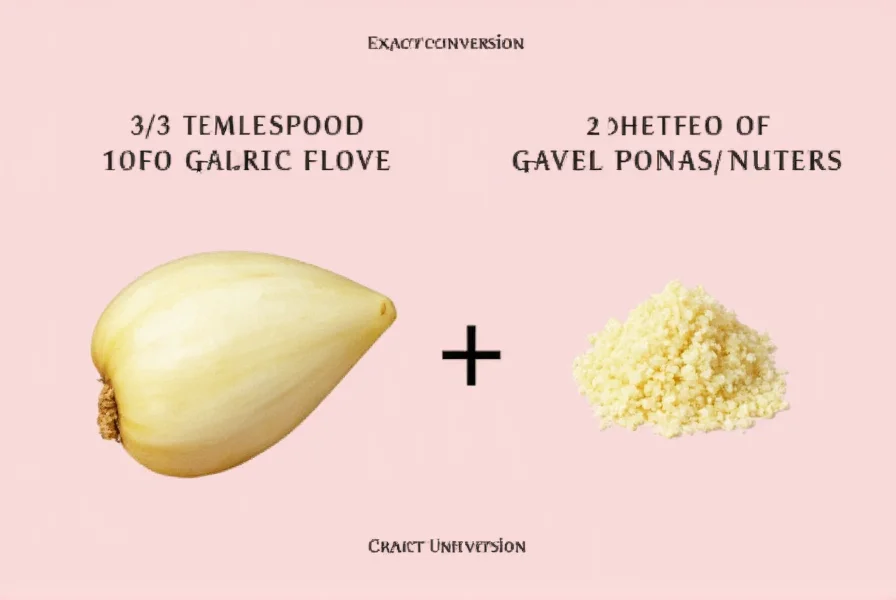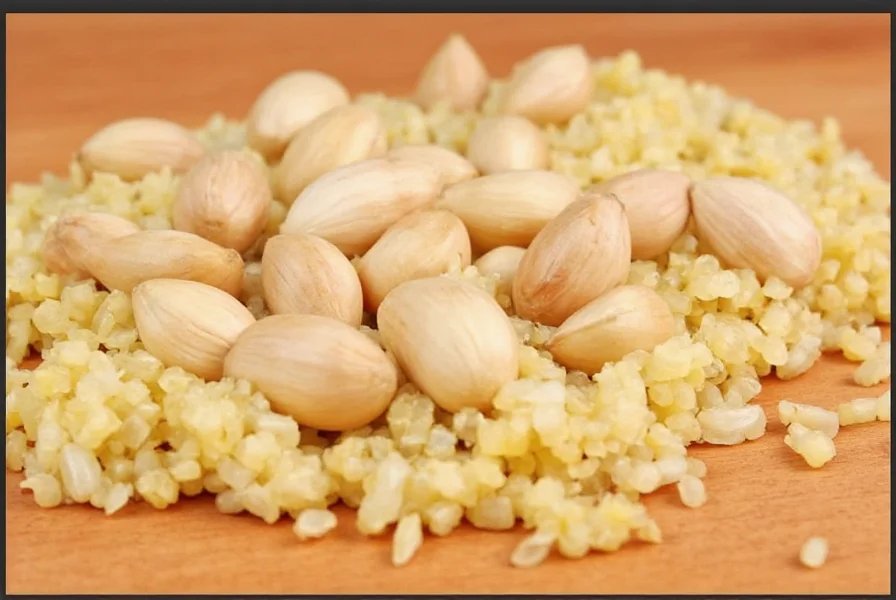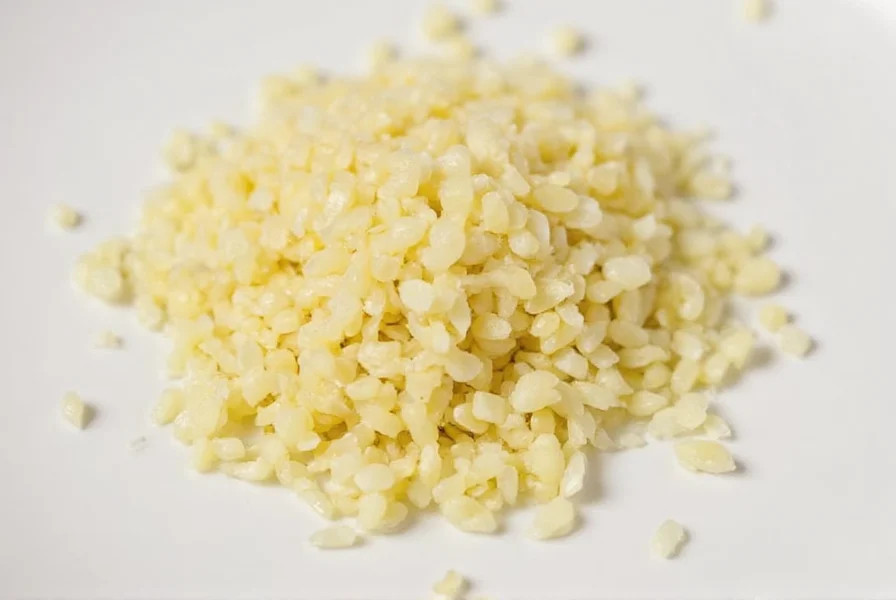Understanding garlic measurements is crucial for consistent cooking results. When a recipe calls for a specific number of cloves but you're working with pre-minced garlic or need to adjust quantities, knowing the exact conversion prevents flavor imbalances. The standard conversion for fresh garlic is that one medium garlic clove yields about 1/4 tablespoon (1/2 teaspoon) of minced garlic.
Garlic size variations affect measurements significantly. Commercial garlic cloves range from small (0.5 inches in diameter) to jumbo (over 1.5 inches). This size difference means a single clove can produce anywhere from 1/8 to 1/2 tablespoon of minced garlic. For the most accurate results in recipe development or adaptation, weighing garlic provides the most consistent measurement - one medium clove typically weighs 10 grams.
Garlic Measurement Conversion Guide
Use this comprehensive reference for all your garlic measurement needs. These conversions apply to freshly minced garlic using standard kitchen techniques:
| Garlic Cloves | Tablespoons (minced) | Teaspoons (minced) | Grams (approximate) |
|---|---|---|---|
| 1 medium clove | 0.25 tbsp | 0.75 tsp | 10 g |
| 2 medium cloves | 0.5 tbsp | 1.5 tsp | 20 g |
| 3 medium cloves | 0.75 tbsp | 2.25 tsp | 30 g |
| 4 medium cloves | 1 tbsp | 3 tsp | 40 g |
| 5 medium cloves | 1.25 tbsp | 3.75 tsp | 50 g |
| 6 medium cloves | 1.5 tbsp | 4.5 tsp | 60 g |
| 8 medium cloves | 2 tbsp | 6 tsp | 80 g |

Factors Affecting Garlic Measurements
Several variables influence the precise conversion from cloves to tablespoons:
Clove Size Variability
Garlic bulb size varies by season and growing conditions. Spring garlic typically produces smaller cloves than fall harvests. When precision matters for sensitive recipes like aioli or garlic-infused oils, weighing cloves provides the most reliable measurement.
Mincing Technique
How finely you mince affects volume. A coarse chop yields more volume than a fine mince because air pockets remain between larger pieces. For the standard conversion of 1 clove = 1/4 tablespoon, use a fine mince where pieces are uniformly small (about 1-2mm).
Moisture Content
Freshly harvested garlic contains more moisture than cured garlic, affecting both weight and volume. Store garlic in a cool, dry place for 2-3 weeks before use for more consistent measurements in recipe development.
Practical Cooking Applications
Understanding how many tablespoons is 6 minced garlic cloves helps in several cooking scenarios:
- Recipe scaling: When doubling or halving recipes, convert all measurements consistently
- Ingredient substitution: Replace fresh garlic with pre-minced products using accurate ratios
- Flavor balancing: Adjust garlic quantities based on dish requirements without overpowering
- Batch cooking: Prepare large quantities with consistent flavor profiles
Professional chefs often use the 4:1 ratio - 4 cloves of garlic equal 1 tablespoon minced. This provides a reliable mental conversion during recipe execution. For the specific conversion of 6 minced garlic cloves to tablespoons, remember it's precisely 1.5 tablespoons, or 4.5 teaspoons.

Troubleshooting Common Measurement Issues
Cooks often encounter these garlic measurement challenges:
Problem: Recipe calls for "6 cloves" but you only have pre-minced garlic
Solution: Measure 1.5 tablespoons of pre-minced product. Check if the container lists clove equivalents - many specify "1 teaspoon = 1 clove. "
Problem: Garlic flavor is too strong despite following measurements
Solution: Consider garlic age and variety. Older garlic develops stronger flavor compounds. Use 20% less if using aged garlic.
Problem: Inconsistent results between cooking sessions
Solution: Standardize your mincing technique and consider weighing cloves (10g per medium clove) for critical recipes.
Advanced Measurement Techniques
For culinary professionals and serious home cooks, these methods provide superior accuracy:
- Weight-based measurement: Use a kitchen scale (1 medium clove = 10g)
- Volume displacement: Submerge cloves in water to measure exact volume
- Standardized mincing: Use a garlic press with consistent pressure
- Batch preparation: Mince multiple cloves together for uniform texture
When developing recipes that specify garlic clove to tablespoon conversion, document your exact technique for future reference. Note whether you used a knife mince, garlic press, or food processor, as each method produces different densities.
FAQs About Garlic Measurements
How many tablespoons is 6 minced garlic cloves?
Six medium minced garlic cloves equal 1.5 tablespoons of minced garlic. This conversion assumes standard medium-sized cloves (about 1 inch long and 0.75 inches in diameter) that have been finely minced.
Does garlic clove size affect the tablespoon conversion?
Yes, significantly. Small cloves (under 0.5 inches diameter) yield about 1/8 tablespoon each, while jumbo cloves (over 1.5 inches) can produce up to 1/2 tablespoon each. For recipe consistency, weighing cloves (10g per medium clove) provides the most reliable measurement.
Can I substitute jarred minced garlic for fresh cloves using this conversion?
Yes, but with caution. Jarred minced garlic often contains preservatives that alter flavor intensity. Use 20% less jarred product than fresh for equivalent flavor. For 6 fresh cloves (1.5 tablespoons), start with 1.2 tablespoons of jarred minced garlic and adjust to taste.
Why does my garlic measurement seem off even when following the conversion?
Several factors affect accuracy: mincing technique (fine vs. coarse), garlic moisture content, and clove size variation. For critical recipes, weigh your garlic (1 medium clove = 10g) or use a garlic press for consistent texture. Older garlic also develops stronger flavor compounds, so you may need less than the standard conversion suggests.











 浙公网安备
33010002000092号
浙公网安备
33010002000092号 浙B2-20120091-4
浙B2-20120091-4